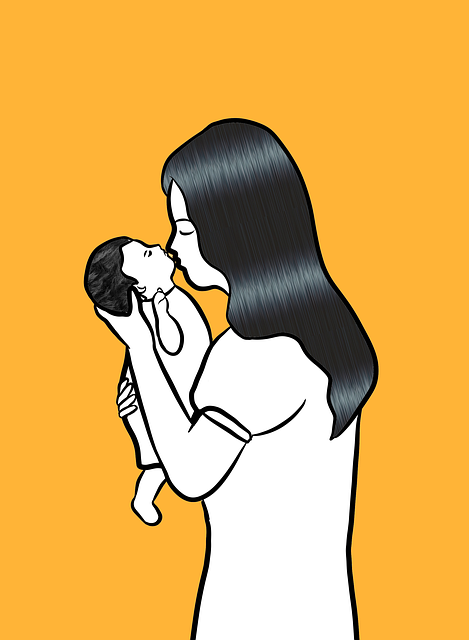Recognizing and preventing child abuse is paramount for ensuring young lives remain safe and secure. By understanding the various forms it can take, from physical to emotional neglect, signs like behavioral shifts and academic decline can be identified. Prompt reporting to child protective services is crucial for accountability and further harm prevention. Strong protective systems, backed by laws and policies, mandate reporting, enforce background checks, and promote safe caring practices. Community education and support networks empower adults and children alike to recognize and report abuse, fostering a culture of vigilance. Specialised care and reintegration programs are vital for trauma-affected children, addressing emotional needs through therapy and community involvement to help them recover and thrive. These comprehensive efforts collectively contribute to child abuse prevention, prioritizing the well-being and rights of future generations.
In every society, ensuring the rights and well-being of children is paramount. Protecting them from abuse, neglect, and exploitation is not just a moral imperative but a cornerstone of progress. This article delves into crucial aspects of promoting child welfare, including recognizing signs of abuse, building robust protective systems through laws and policies, empowering communities with education and support, and facilitating recovery and reintegration for a safer future. Let’s explore strategies to prevent child abuse and foster nurturing environments.
Recognizing Child Abuse: Signs and Symptoms
Recognizing child abuse is a critical step in ensuring their well-being and preventing further harm. It’s essential to understand that abuse can manifest in various forms, including physical, emotional, sexual, and neglect. By being aware of potential signs and symptoms, we can create a safer environment for children.
Some common indicators include unusual behavior changes, such as aggression or withdrawal, fear of certain people or places, poor academic performance, and frequent injuries with uncorroborated explanations. Children may also display secretiveness, have a sudden loss of friends, or show signs of trauma like bedwetting or sleep disturbances. If you suspect any form of child abuse, it’s crucial to report it promptly through local child protective services, fostering a culture of accountability and safeguarding our future generations.
Building Protective Systems: Laws and Policies
In the ongoing quest to safeguard our future generations, establishing robust protective systems is paramount. Laws and policies serve as the cornerstone of child abuse prevention, providing a framework that ensures every child’s rights and well-being are protected. These legal mechanisms are designed to identify, intervene, and ultimately prevent instances of child abuse and neglect. By mandating reporting requirements for professionals who interact with children, implementing stringent background checks for caregiving positions, and establishing clear guidelines for safe caring practices, these measures create a supportive environment that discourages harm and promotes healthy development.
Furthermore, regular reviews and updates to existing legislation are crucial to keeping pace with evolving understanding of child development and best practices in protection. Collaboration between government bodies, non-profit organizations, and community leaders is essential to developing comprehensive policies that address all facets of child welfare. Together, these efforts create a web of support, ensuring children are protected not just from immediate harm but also from systemic issues that may contribute to abuse or neglect.
Empowering Communities: Education and Support
Empowering communities is a vital step in promoting the rights and well-being of children, especially in protecting them from potential abuse. Education plays a crucial role in this process. By implementing comprehensive programs that educate both adults and children on recognizing signs of child abuse and the importance of reporting it, we can foster a culture of vigilance and care. This includes teaching empathy, healthy relationships, and conflict resolution skills to young minds, ensuring they grow up with the knowledge to protect themselves.
Support systems are equally important. Local communities should have access to resources that provide counseling, legal aid, and safe spaces for children and families. Encouraging open dialogue about child abuse prevention and breaking down barriers that prevent reporting can significantly enhance these efforts. Through community engagement and collaboration, we can create a network of support, ensuring every child feels valued, heard, and protected from harm.
Recovery and Reintegration: Nurturing a Safe Future
Children who have experienced trauma and violence, including instances of child abuse prevention, require specialized support for their recovery and reintegration into society. This process involves creating a safe and nurturing environment that addresses their emotional and psychological needs. By implementing effective interventions, such as therapy, counseling, and community-based programs, we can help children heal and rebuild their lives.
Focusing on recovery means providing long-term support to ensure these young individuals can develop resilience and thrive. Reintegration involves re-connecting them with their communities, families, and peers in a way that respects their agency and promotes positive interactions. It’s about fostering an environment where children feel valued, understood, and empowered, paving the way for a brighter and safer future for all children.
Promoting the rights and well-being of children is a collective responsibility that transcends circumstances. By recognizing signs of child abuse, strengthening protective systems through robust laws and policies, empowering communities with education, and providing comprehensive support for recovery and reintegration, we can foster a safer future for all children. Join the movement to prevent child abuse and create a nurturing environment where every child feels valued and protected.
